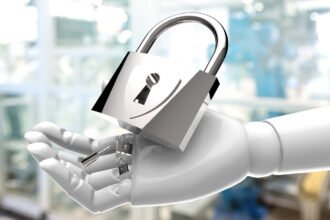Big data is changing the nature of mechanical systems in every way imagineable. This means that you need to consider the implications of big data when choosing mechanical components for various systems. Rotary joints are a prime example.
How Rotary Joints Impact the Trasnmission of Data
A rotary joint is a device utilized to transfer (pressurized or under vacuum) fluid from a passage supply to a rotating outlet providing a mechanical sealing to the system. Rotary joints are essential in many rotating mechanical parts with a flowing medium. It provides an interface in the union of rotary parts and a stationary supply input, such as pipes or tubes, while preserving motion and continuous flow.
However, rotary joints have a function in modern technology that they didn’t used to have. They play an important role in the transmission of data. This is evident in machine-to-machine (M2M) technology. A growing number of machines are connecting to the IoT, which means that they need to operate reliably to keep the entire localized IoT from imploding.
A rotary joint is also called a rotary union, swivel union, swivel joint, rotary coupling, or rotary valve. It handles different media including but not limited to water, hydraulic fluid, coolants, steam, gases, and some solids. If it fails, then other IoT devices on the M2M network could cease to function.
Rotary joints are used in many applications such as heavy equipment, energy devices, and industrial machinery. In this guide, we will be discussing more on rotary joints, and how you can select the right one for your application, especially if you are using big data to connect it to the IoT.
What are the parts of a rotary joint?
Below are some of the basic parts that typically constitute a rotary joint for an IoT device:
- Housing – this is the stationary part that contains all other components. Also called the body of the joint, it holds the pressure and acts as a torque restraint. Fluids can flow through the joint axially or radially through ports in the housing. The right housing is necessary to protect data for any IoT device.
- Shaft – this is the part connected to the rotating equipment and transfers media to the machine roll. Seal and bearings are usually assembled around the shaft. There are times where the shaft is stationary while the housing rotates, as in large flange rotary joints.
- Bearings – one of the most important parts of rotary unions, bearing allows a part of the union, be it the housing or shaft, to rotate. If a bearing fails, the entire machine may be destroyed and essential data could be lost.
- Seal – main wearing component of rotary joint as it prevents or reduces leakage of media between the rotating and stationary equipment. The majority of joints have more than one seal. Types of seal range from lip seal to more complex spring-loaded mechanical seal which automatically adjusts to lessen the pressure on seal faces, minimizing wear and friction.
- Retaining ring – used to hold parts onto the housing or shaft.
Figure 1: Primary components of a rotary joint
Source: wikipedia
In order to choose the best rotary joint for your application, you need to know first the fitting requirement of your equipment and your desired technical parameters.
Technical parameters
Speed of rotation
The typical speed of rotary joints ranges from 0 to 1,000 RPM. For some high-speed applications, this can reach up to 10,000+ RPM. Machine learning technology is responsible for regulating these speeds in modern IoT machines.
Rotary unions with NPT threads are usually used for equipment at a slower speed. When the speed reaches more than 1500 rpm, it is recommended to use machine thread for they offer better alignment of rotating joint relative to the machine roll.
Media
The right rotary joint for your application is also greatly dependent on your preferred media. Fluids transferred include, but not limited to, water, air, oil, chemicals, coolants, steam, and hydraulic fluid.
Temperature
Rotary joints are composed of different internal parts, each with their own temperature limits. It is essential that you know the temperature of the fluids to be used (eg most applications that use water have media in ambient temperature).
The typical media and environment temperature for rotary joint applications range from -100° C to 200°C.
Rotating joints with bushing-type bearings are used for applications needing high-temperature limits, mainly because of their self-lubricating feature. Those with standard deep groove ball bearings have limits up to 120°C while heat stabilized bearings that come with hi-temperature grease increase the temperature limit up to 160°C.
Pressure
When choosing a rotary joint, the maximum operating pressure should be always considered as the operating pressure. Pressure may also vary for multi-passages applications.
A specific application may need the transfer of a single media at a single pressure. However, when multi-media passages occur, it is essential to know the operating pressures of each media along with the type of channel used (whether the flow of media is outer or inner).
Normal operating pressure of rotary joint ranges from 0 to 20,000 PSI with some applications requiring up to 40,000+ PSI.
Fitting information
Number of passages
Rotary joints can have one to four or more passages to accommodate the flow of fluid. In duoflow (that is, two passages), one media can enter and exit through the same joint, two separate media can be transferred at two varying pressures, or one media can be transferred at two different pressures.
Thread specifications and union size
When talking about specifications and size, we are referring to attachment or thread specification of the rotary joint on the machine roll and the nominal size of the union. For example, 2” BSP LH or 1” NPT RH.
The fitting materials that will be used should also be determined according to the possible existence of abrasive or corrosive agents.
Type of connection
Proper identification of the connection you want is also vital in choosing rotary joints. It can be welded on or directly connected, male or female, flange, or screw-in.
Material used
The material of the joint is also important. They are usually made in brass, aluminum, steel, bronze, or cast iron depending on the media to be transmitted.
General Consensus
Proper installation and maintenance are equally important to achieve the best performance of your rotary joint. Equipment typically fails due to misalignment, inadequate torque restraints, piping strains, and seal wearing. IoT devices may also fail if software is improperly updated.
The life of a joint is usually dependent on its seal package. Seals of poor quality wear out faster, leading to an increase in downtime, maintenance, and repair cost.
Various configurations and designs of joints, some custom-made for your application, are now present in the market.
Slip rings can be integrated with rotary joints to transmit current or electrical signals. Others have thru-bore for wiring and mounting, and dry running protection that allows operation without lubrication. There are also joints that have a slowing motion to control media speed.
Select the Right Rotary Bearings for an IoT Machine Network
The IoT has changed the role of many modern machines. We rely on big data and M2M technology to keep them operating reliably. Choosing the right rotary joint is vital to ensure safety, reliability, process efficiency, and long life.










